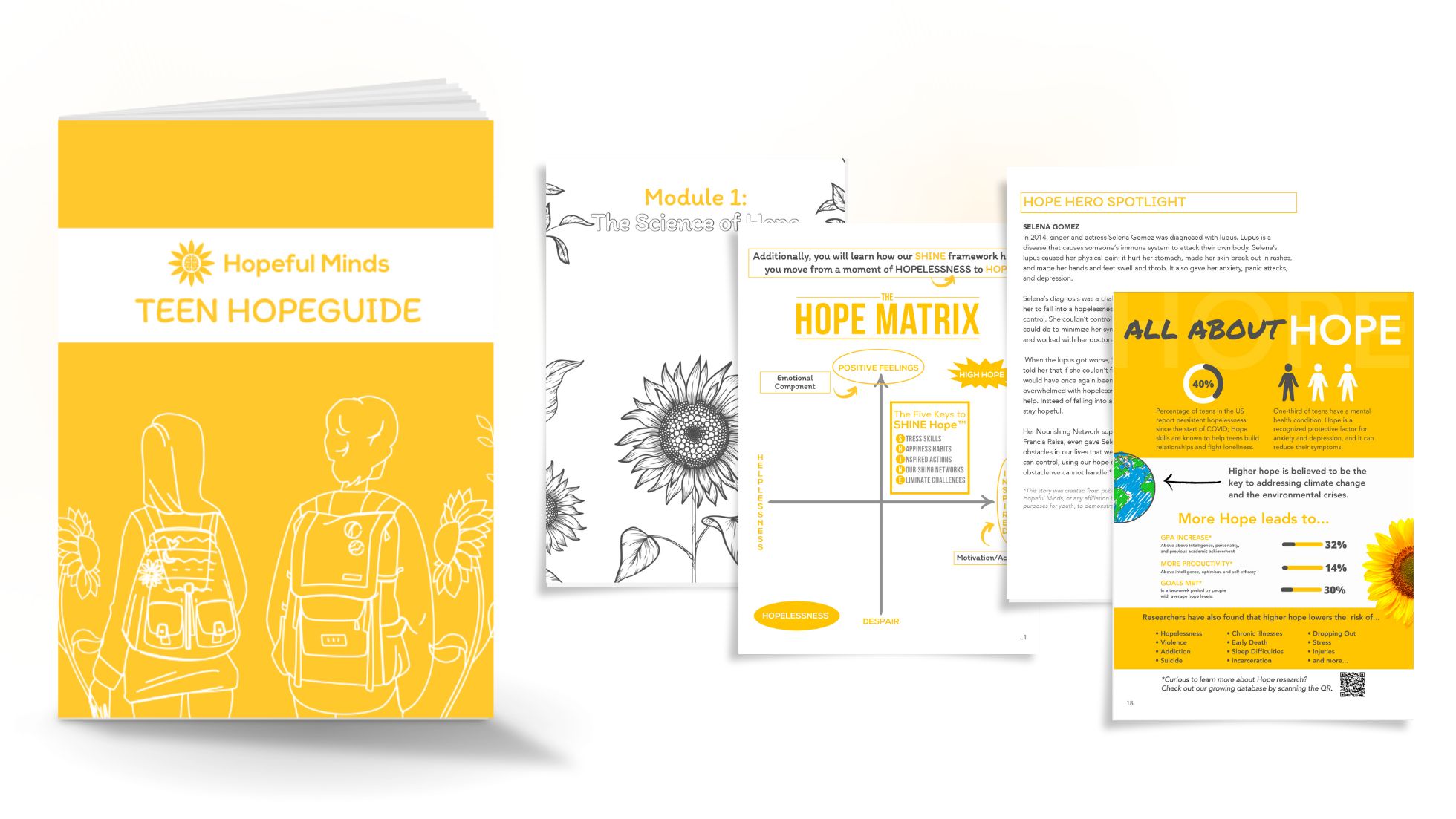Hopelessness is costing your city. From addiction to dementia to schizophrenia, almost 1 billion people worldwide suffer from a mental disorder, and hopelessness is a frequent precursor and symptom of mental illness.
Hopelessness also predicts violence, weapon-carrying on school property, addiction, accidents, risky behaviors, homelessness, and ill health.

As a city leader, you must ensure all know what hopelessness is and ensure all know how to activate skills for hope.

Left untreated, hopelessness
- Increases the risk of violence, as hopelessness is the only consistent predictor of violence.
- Increases the chance of all risky behaviors in youth (i.e., violence, weapon-carrying on school property, self-harm, unprotected sex, bullying, partner violence, and more).
- Increases costs to your city. In total, poor mental health was estimated to cost the world economy approximately $2·5 trillion per year in poor health and reduced productivity in 2010, a cost projected to rise to $6 trillion by 2030.
- Lost productivity as a result of two of the most common mental disorders, anxiety, and depression, costs the global economy US$ 1 trillion each year.
- Increases the risk of suicide.
- Suicide is the 2nd leading cause of death in teens and young adults.
- Emergency department visits for attempted suicide have risen by 51%among adolescent girls and reports indicated 25% of teen girls made a suicide plan.
- Hopelessness is predictive of both loneliness and suicidally, and notably, there is no found relationship between between loneliness and suicidality beyond hopelessness.
- Suicide is the second leading cause of death among 15-29-year-olds.
- Decreases attendance, the quality of task performance, retention, physical health, and sleep quantity and quality, impairing academic and occupational performance.
- Hopelessness is linked to cigarette and alcohol use in college students; overdose history is also related to higher levels of hopelessness.
Those with higher levels of hope are more likely to set and achieve the SDGs, as those high in hope have the drive and determination to persevere and meet goals while hopelessness can hinder an individual’s ability to set and achieve goals. With hope, your city can work towards the Sustainable Development Goals (SDGs) that were set forth by the United Nations to transform our world.




